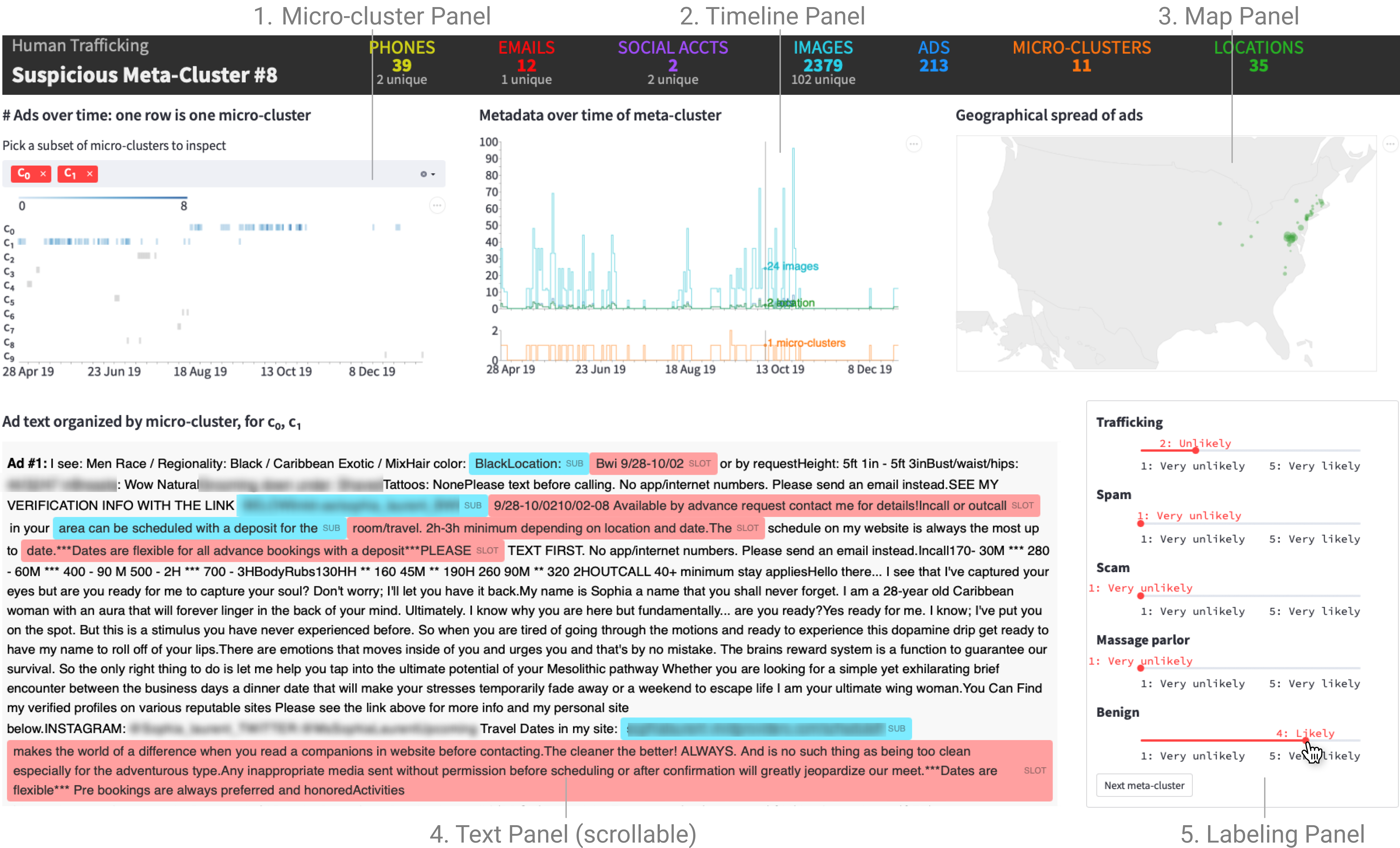TRAFFICVIS: Visualizing Organized Activity and Spatio-Temporal Patterns for Detecting and Labeling Human Trafficking
Catalina Vajiac, Duen Horng Chau, Andreas Olligschlaeger, Rebecca Mackenzie, Pratheeksha Nair, Meng-Chieh Lee, Yifei Li, Namyong Park, Reihaneh Rabbany, Christos Faloutsos
View presentation:2022-10-19T14:12:00ZGMT-0600Change your timezone on the schedule page
2022-10-19T14:12:00Z

Prerecorded Talk
The live footage of the talk, including the Q&A, can be viewed on the session page, Decision Making and Reasoning.
Fast forward
Abstract
Law enforcement and domain experts can detect human trafficking (HT) in online escort websites by analyzing suspicious clusters of connected ads. How can we explain clustering results intuitively and interactively, visualizing potential evidence for experts to analyze? We present TrafficVis, the first interface for cluster-level HT detection and labeling. Developed through months of participatory design with domain experts, TrafficVis provides coordinated views in conjunction with carefully chosen backend algorithms to effectively show spatio-temporal and text patterns to a wide variety of anti-HT stakeholders. We build upon state-of-the-art text clustering algorithms by incorporating shared metadata as a signal of connected and possibly suspicious activity, then visualize the results. Domain experts can use TrafficVis to label clusters as HT, or other, suspicious, but non-HT activity such as spam and scam, quickly creating labeled datasets to enable further HT research. Through domain expert feedback and a usage scenario, we demonstrate TrafficVis's efficacy. The feedback was overwhelmingly positive, with repeated high praises for the usability and explainability of our tool, the latter being vital for indicting possible criminals.